Wilder And Cagney Give Us A Coke And A Smile… And Non-Stop Talking
DIRECTED BY: BILLY WILDER/1961
STREET DATE: MAY 30, 2017/KINO LORBER
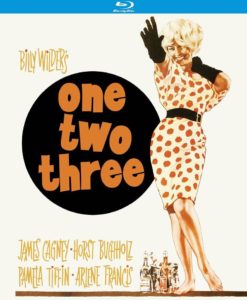
The height of the Cold War lined up approximately with the height of Billy Wilder’s success as the destroyer of American movies, innocence wise. While the missiles of October were still a couple years away, Wilder was following up his Best Picture-winning soap-dish on office politics, The Apartment, with a darkly-cynical, broadly-funny dive-bomb into politics of the more international kind.
One, Two, Three wasn’t his first morbid depiction of feckless human nature, but certainly it was his blackest commentary since Ace in the Hole ten years before, and far and away the talkiest movie he ever made. Designed as a deliberate backwards-grab at the freewheeling screwball comedies of the His Girl Friday stripe, Wilder and faithful co-writer I. A. L. Diamond’s genius was to marry that rapid-fire gambit, top-to-bottom, with on-the-nose political satire. And in that rarified pocket it spins and spins and spins some more, throwing off topical jokes, now-obscure references, bawdy double entendres, and plot points that build in such density that a veritable wall is built between the movie and any opportunity you might have to condemn it.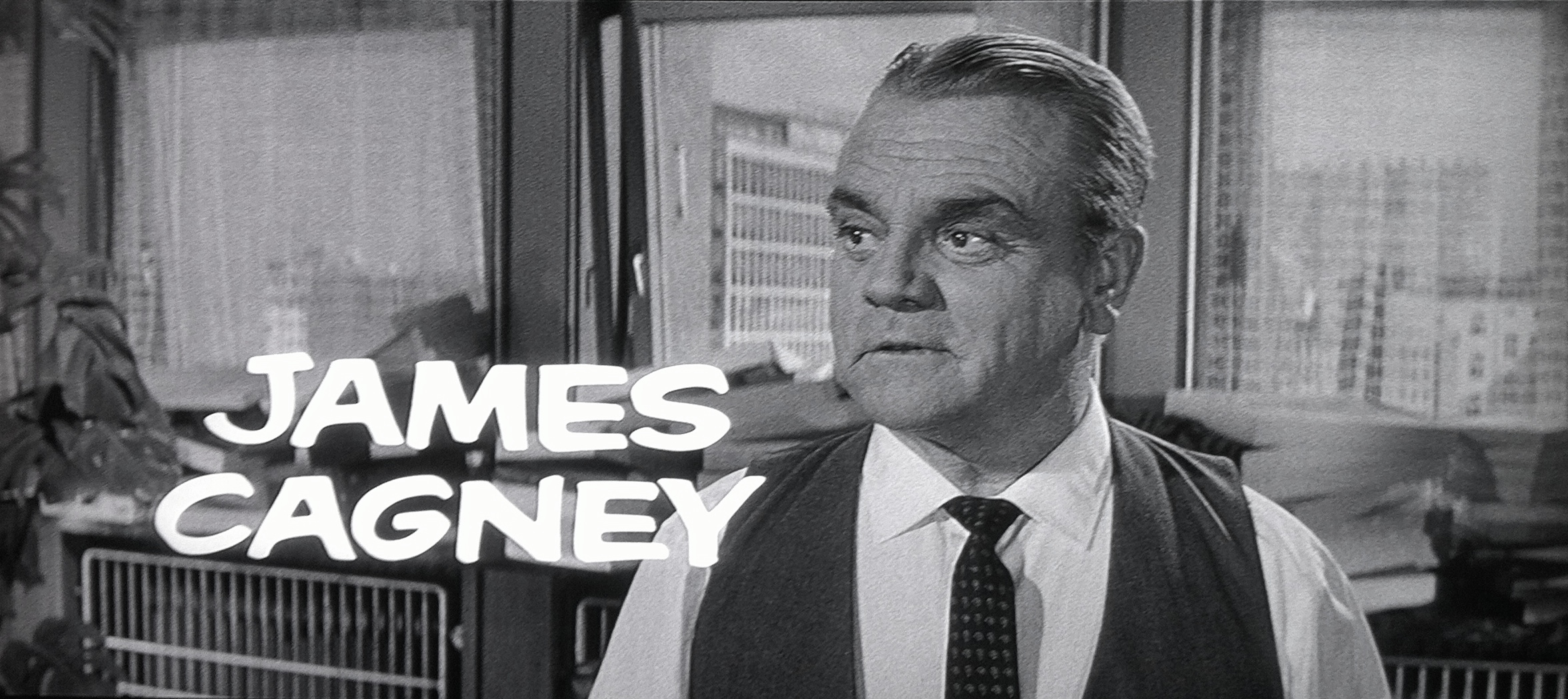 James Cagney, in his last leading role (a smaller part awaited him in Ragtime twenty years later), still somehow lithely bounds around even in his stocky older age, giving just about everything he has to his steamroller of a role as “Mac” MacNamara, the manager of the Coca-Cola plant in Ally-controlled West Berlin, busily constructing a scheme to impress the boss back in Atlanta with his nifty little effort to penetrate the wide-open, untapped Russian market beyond the two Berlins. Says Mac: “300 million thirsty comrades, all panting for the pause that refreshes.” Also says Mac: about a million words per scene. Wilder and Diamond seem to have written a script with the intention of killing Cagney under an avalanche of unfiltered id. But the former poster boy for gangsterhood happily trades in his machine gun for dead-aimed diction, meeting the verbose challenge with the vigor of an opportunist 30 years his junior.
James Cagney, in his last leading role (a smaller part awaited him in Ragtime twenty years later), still somehow lithely bounds around even in his stocky older age, giving just about everything he has to his steamroller of a role as “Mac” MacNamara, the manager of the Coca-Cola plant in Ally-controlled West Berlin, busily constructing a scheme to impress the boss back in Atlanta with his nifty little effort to penetrate the wide-open, untapped Russian market beyond the two Berlins. Says Mac: “300 million thirsty comrades, all panting for the pause that refreshes.” Also says Mac: about a million words per scene. Wilder and Diamond seem to have written a script with the intention of killing Cagney under an avalanche of unfiltered id. But the former poster boy for gangsterhood happily trades in his machine gun for dead-aimed diction, meeting the verbose challenge with the vigor of an opportunist 30 years his junior.
He bulldogs his way through scenes of unscrupulous manipulation and one-upmanship, essentially barking lengthy, detailed orders for the entire running time, and only winking at us about how far he’s come since The Public Enemy (1931) by coyly threatening a communist interloper with a sliced-open grapefruit. Other odes to Cagney’s career populate the corners of the movie: a cuckoo clock that chimes “Yankee Doodle Dandy”, Red Buttons (in a cameo) doing the hitchy shoulder thing Cagney did in Angels with Dirty Faces (1938), and in an egalitarian move, an utterance of Cagney compatriot Edward G. Robinson’s famous “Mother of mercy, is this the end of Rico?” line from Little Caesar (1931). Fair to say, this movie loves James Cagney, even as it’s making him do verbal gymnastics for a hundred and fifteen minutes straight.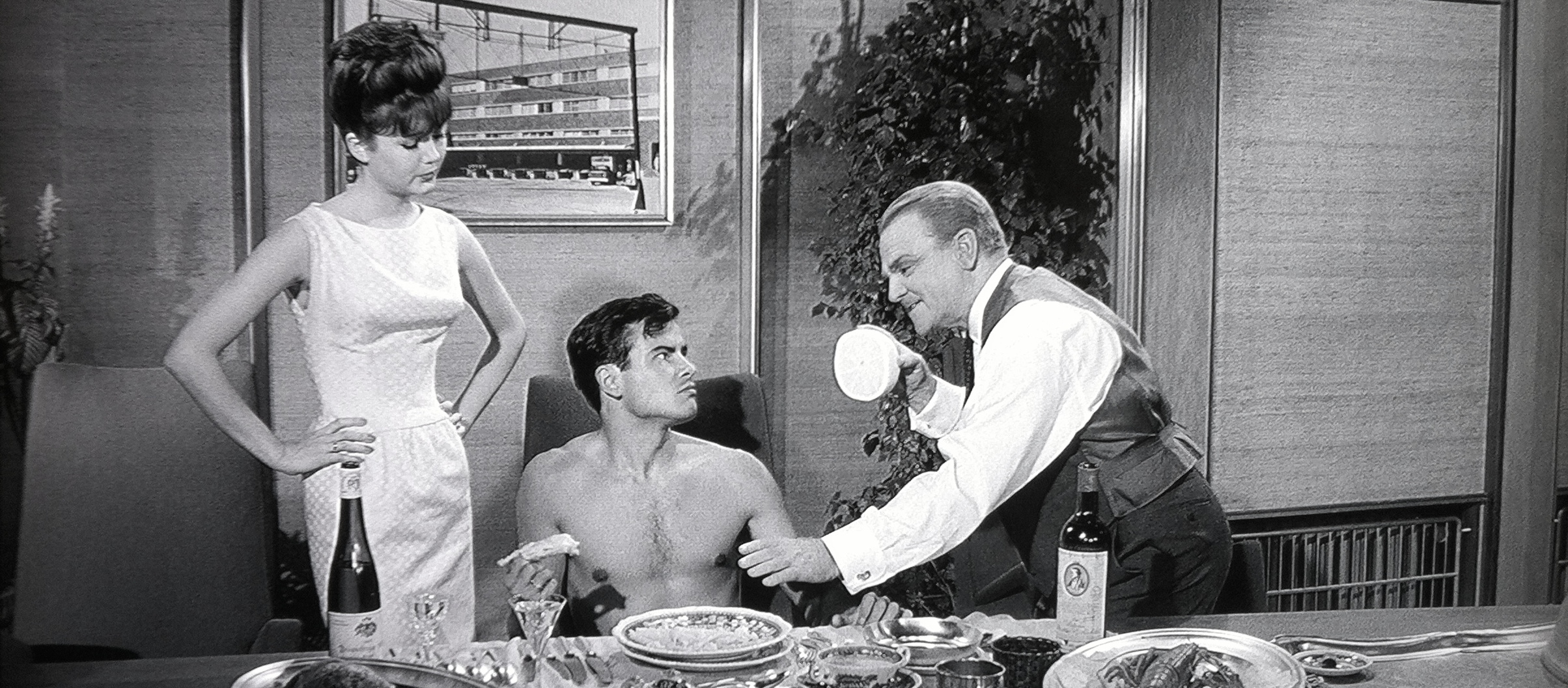 One can only speculate on the possibly intentional link between Cagney’s “MacNamara” and the newly ensconced Secretary of Defense, Robert McNamara, who’d just left a killer post as the “Whiz Kid”/wunderkind president of the Ford Motor Company to manage JFK’s war department – eventually becoming the prime architect of the Vietnam War. But whatever the veracity of that link, no viewer can ignore the wall-to-wall connections the film makes between selling Cokes and minding a war. From the location of Mac’s plant adjacent one of the era’s all-time hot spots, the Brandenburg Gate, to the giant world map on Mac’s office wall, tacked and plotted with plant locations spread across the oft-cited “European theater of operations”, to the ever-rising pile of dialogue references (“Napoleon blew it, Hitler blew it, but Coca-Cola’s gonna pull it off!”), the movie wants us to equate the uber-capitalistic marketing of a soft drink with the conquering of an entire ideology: the war is advertised as cold, and it’s available in a six-pack. And while the movie has been dinged, even in its time, for being either too flip about the dead seriousness of war or too obvious in its cheaply-earned satire, the setting and the details of the era have now been simplified by time passed, effectively elevating the themes into the realm of the universal.
One can only speculate on the possibly intentional link between Cagney’s “MacNamara” and the newly ensconced Secretary of Defense, Robert McNamara, who’d just left a killer post as the “Whiz Kid”/wunderkind president of the Ford Motor Company to manage JFK’s war department – eventually becoming the prime architect of the Vietnam War. But whatever the veracity of that link, no viewer can ignore the wall-to-wall connections the film makes between selling Cokes and minding a war. From the location of Mac’s plant adjacent one of the era’s all-time hot spots, the Brandenburg Gate, to the giant world map on Mac’s office wall, tacked and plotted with plant locations spread across the oft-cited “European theater of operations”, to the ever-rising pile of dialogue references (“Napoleon blew it, Hitler blew it, but Coca-Cola’s gonna pull it off!”), the movie wants us to equate the uber-capitalistic marketing of a soft drink with the conquering of an entire ideology: the war is advertised as cold, and it’s available in a six-pack. And while the movie has been dinged, even in its time, for being either too flip about the dead seriousness of war or too obvious in its cheaply-earned satire, the setting and the details of the era have now been simplified by time passed, effectively elevating the themes into the realm of the universal.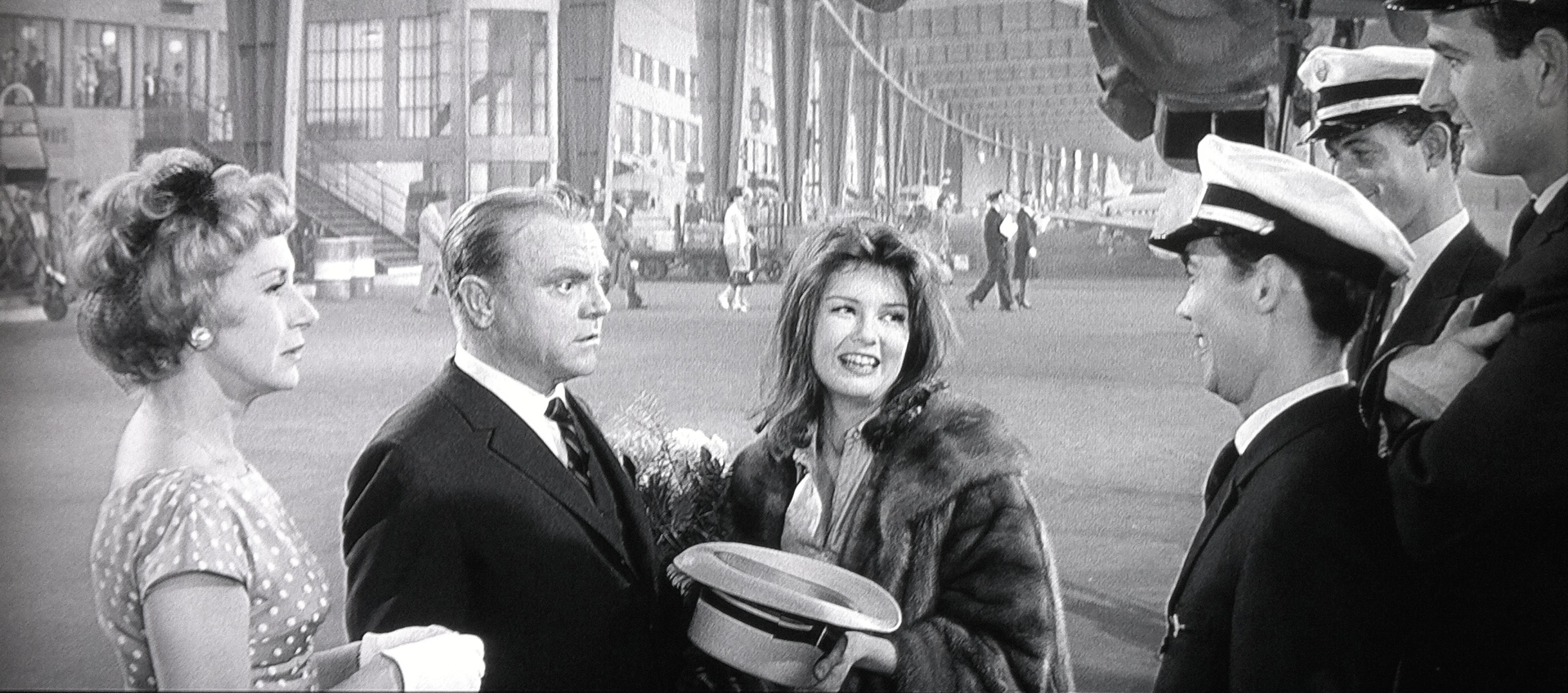 But it’s not a Billy Wilder movie if it’s not also about sex, and he submits to the irresistible alchemy, blending ideological domination with the inevitable loss of purity of one of the film’s main characters. We could say the overarching, never-seen symbol here is the parade of phallic Coke bottles passing numerous times through the Brandenburg Gate, but it doesn’t stop there. The entire plot turns on MacNamara, given unwanted charge over his boss’s livewire, 17-year-old daughter, Scarlett (Pamela Tiffin), being forced to manage the fallout when she wastes her pure, American virginity on a Communist upstart named Otto (Horst Buchholz), who’s hell-bent on taking down the entire Western Bloc with his screaming teeth. The first half of the movie is Mac frantically trying to erase that consummation by scuttling the boy back into East Berlin, never to be seen again, while the second half is all about making sure the two are good and married once it’s learned they’re already expecting a baby. The joke is on the entire West, you see, when the capitalists can’t scorch and burn the commies with soda cause the reds seem more charming by comparison.
But it’s not a Billy Wilder movie if it’s not also about sex, and he submits to the irresistible alchemy, blending ideological domination with the inevitable loss of purity of one of the film’s main characters. We could say the overarching, never-seen symbol here is the parade of phallic Coke bottles passing numerous times through the Brandenburg Gate, but it doesn’t stop there. The entire plot turns on MacNamara, given unwanted charge over his boss’s livewire, 17-year-old daughter, Scarlett (Pamela Tiffin), being forced to manage the fallout when she wastes her pure, American virginity on a Communist upstart named Otto (Horst Buchholz), who’s hell-bent on taking down the entire Western Bloc with his screaming teeth. The first half of the movie is Mac frantically trying to erase that consummation by scuttling the boy back into East Berlin, never to be seen again, while the second half is all about making sure the two are good and married once it’s learned they’re already expecting a baby. The joke is on the entire West, you see, when the capitalists can’t scorch and burn the commies with soda cause the reds seem more charming by comparison.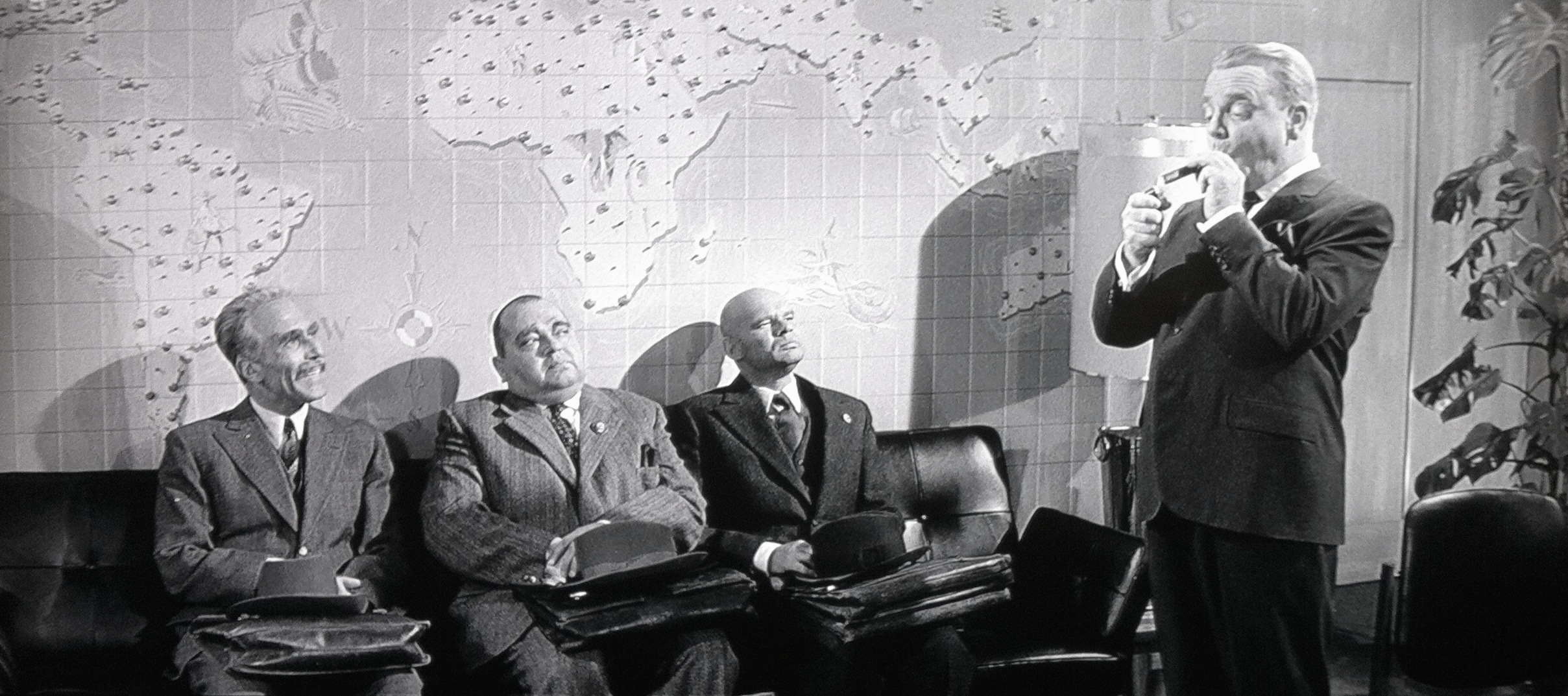 But in the world of early ’60s satire, even the obvious sexual parallels to the political conquest of a nation (cynically stating that they got to us first) feels tame compared to the ways the metaphor got stretched and warped a few years later by Stanley Kubrick in his much more direct, yet much more clever political satire, Dr. Strangelove (1964). There’s even an oblique, perhaps unintentional, nod to Wilder’s movie when Peter Sellers’ Col. Mandrake needs a quarter to call the president to stop Armageddon from happening and shoots a Coke machine to get it. And his reprimand: “You’re going to have to answer to the Coca-Cola company.” Strangelove, saturated as it is with sexual wordplay, visuals, and motivations, and with its constant refrain of fluid-based self-justification for global extinction, makes One, Two, Three feel in retrospect a bit like an over-extended and unnecessary extrapolation of that single joke.
But in the world of early ’60s satire, even the obvious sexual parallels to the political conquest of a nation (cynically stating that they got to us first) feels tame compared to the ways the metaphor got stretched and warped a few years later by Stanley Kubrick in his much more direct, yet much more clever political satire, Dr. Strangelove (1964). There’s even an oblique, perhaps unintentional, nod to Wilder’s movie when Peter Sellers’ Col. Mandrake needs a quarter to call the president to stop Armageddon from happening and shoots a Coke machine to get it. And his reprimand: “You’re going to have to answer to the Coca-Cola company.” Strangelove, saturated as it is with sexual wordplay, visuals, and motivations, and with its constant refrain of fluid-based self-justification for global extinction, makes One, Two, Three feel in retrospect a bit like an over-extended and unnecessary extrapolation of that single joke.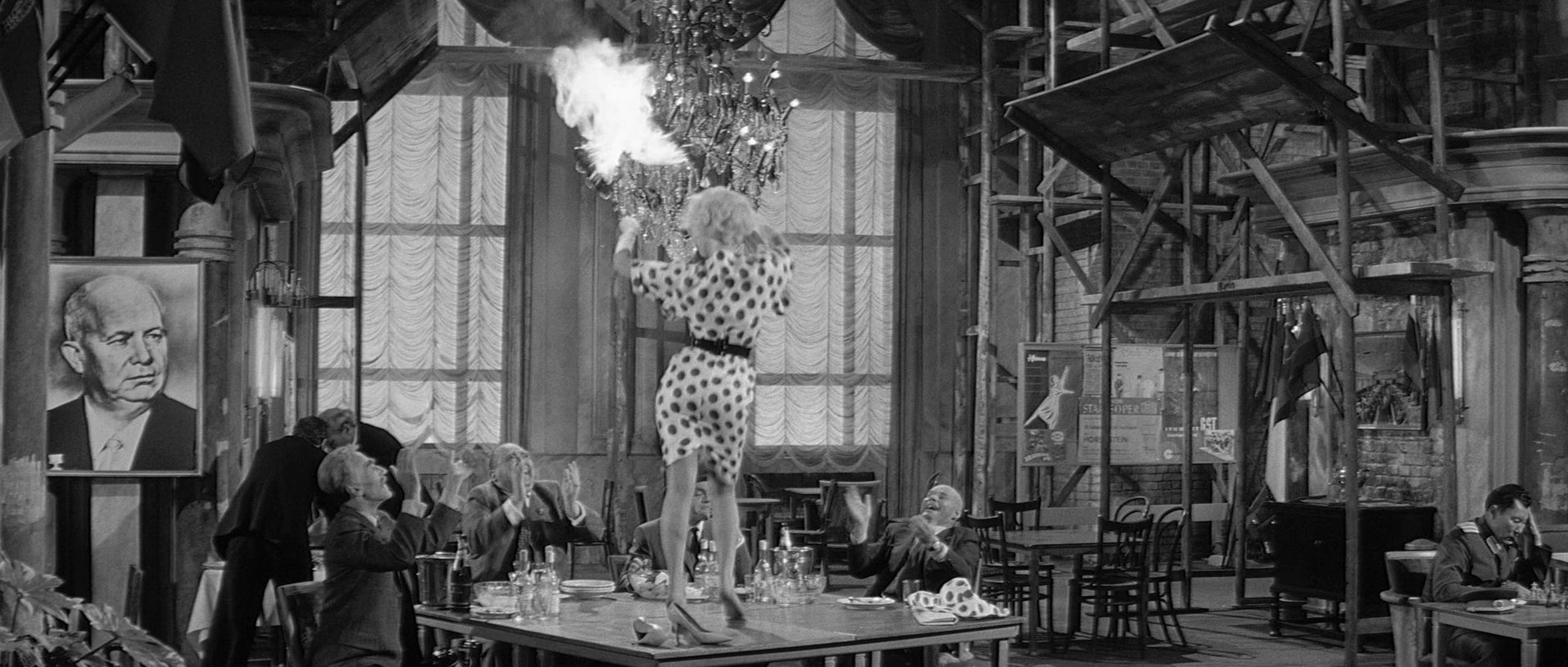 Wilder gets a lot of praise as a director, but that may be misplaced here – all the “gut gemachts” go to Cagney’s performance, rounding his tiny mouth around all that inspired verbiage. Here Wilder seems content with a long series of basically-blocked and too-often-static shots. The effect is much more like a play than a movie – and, indeed, the movie is based on a play, though it was already decades old and completely revamped to incorporate, well, Coke and East Berlin. Still, perhaps there’s an m.o. at work: maybe there should be an offset to the breakneck dialogue, out there as it is, burrowing new stretches of the Autobahn as it goes… Downsized visuals spare us an overdose of stimuli. In any case, the effect is unfortunate. We’re inside Wilder’s preferred and glorious anamorphic widescreen frame (lit by Oscar-nominated Daniel Fapp), but we’re also woefully, deeply set-bound, and the ultimate punch of the movie is like that of a sustained loud rhythm, never stopping for a laugh, never pausing for a real character beat, but always ever a story subverted for a wisecrack.
Wilder gets a lot of praise as a director, but that may be misplaced here – all the “gut gemachts” go to Cagney’s performance, rounding his tiny mouth around all that inspired verbiage. Here Wilder seems content with a long series of basically-blocked and too-often-static shots. The effect is much more like a play than a movie – and, indeed, the movie is based on a play, though it was already decades old and completely revamped to incorporate, well, Coke and East Berlin. Still, perhaps there’s an m.o. at work: maybe there should be an offset to the breakneck dialogue, out there as it is, burrowing new stretches of the Autobahn as it goes… Downsized visuals spare us an overdose of stimuli. In any case, the effect is unfortunate. We’re inside Wilder’s preferred and glorious anamorphic widescreen frame (lit by Oscar-nominated Daniel Fapp), but we’re also woefully, deeply set-bound, and the ultimate punch of the movie is like that of a sustained loud rhythm, never stopping for a laugh, never pausing for a real character beat, but always ever a story subverted for a wisecrack.
But these are all mild chides. The movie’s a testament to speed – Wilder himself even admitted the movie isn’t really funny, but the speed of the movie is. And it’s as much a passing test for Cagney’s stamina as it is for anyone who can hear and get every joke. Luckily, we’re helped through the Bavarian forest of references by the annotated breadcrumbs of film historian Michael Schlesinger on the disc’s commentary track. In the final product test, Wilder, Diamond, and the mercenary Cagney give it their all here, in a seemingly united desire to teach the world to sing in perfect harmonious greed.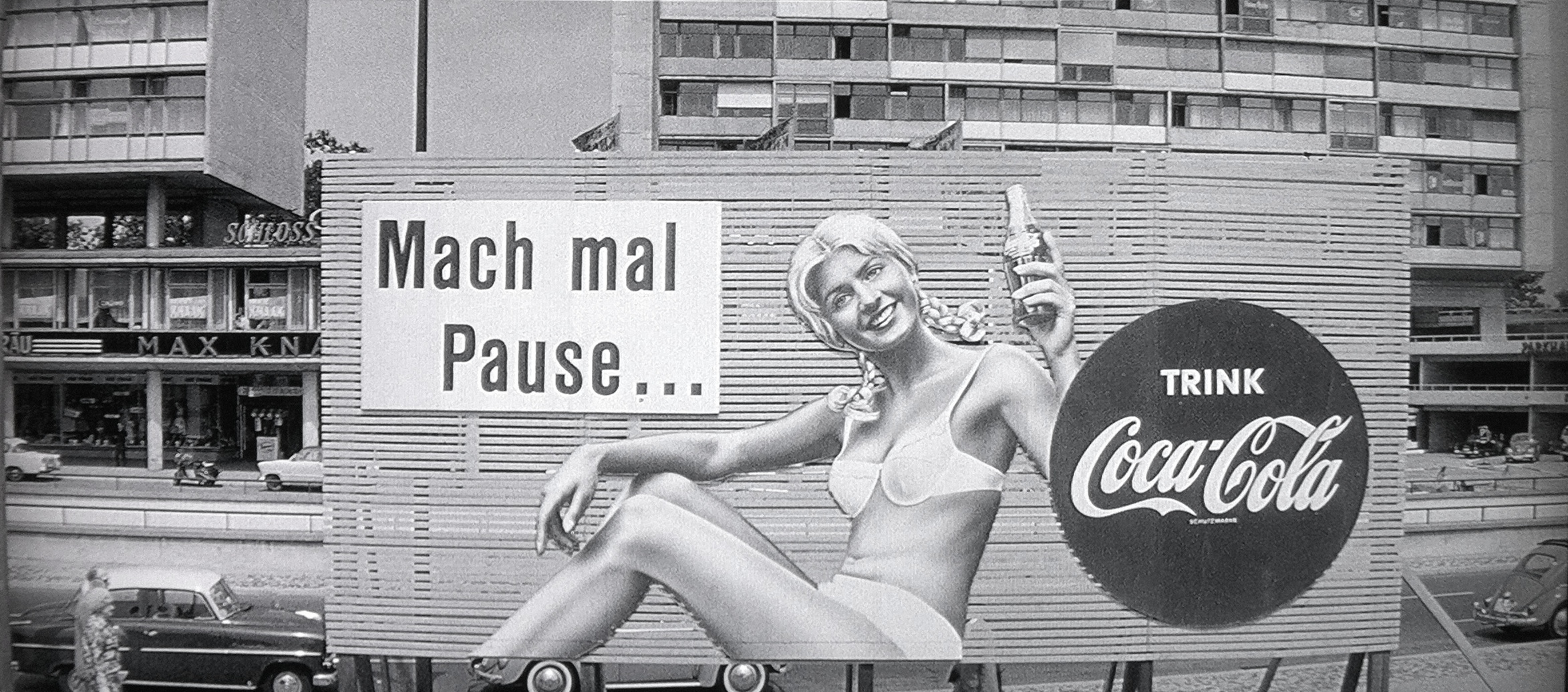
The images in this review are not representative of the actual Blu-ray’s image quality, and are included only to represent the film itself.

